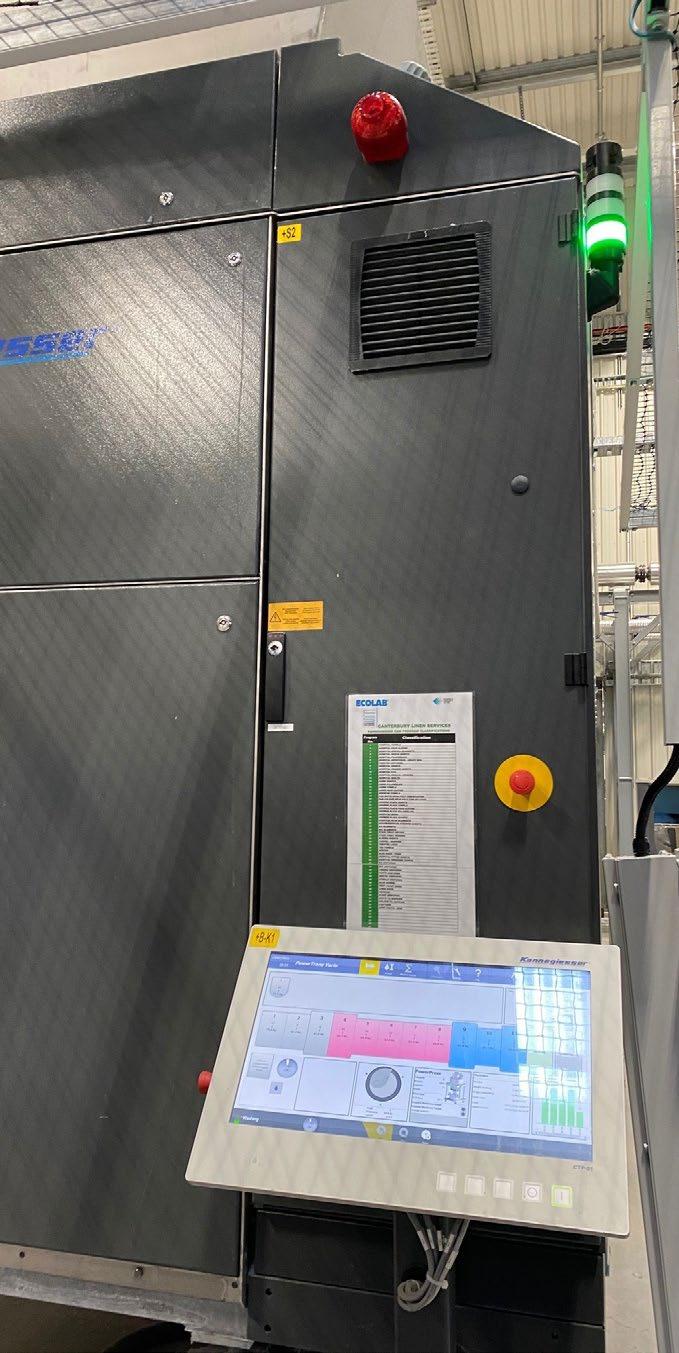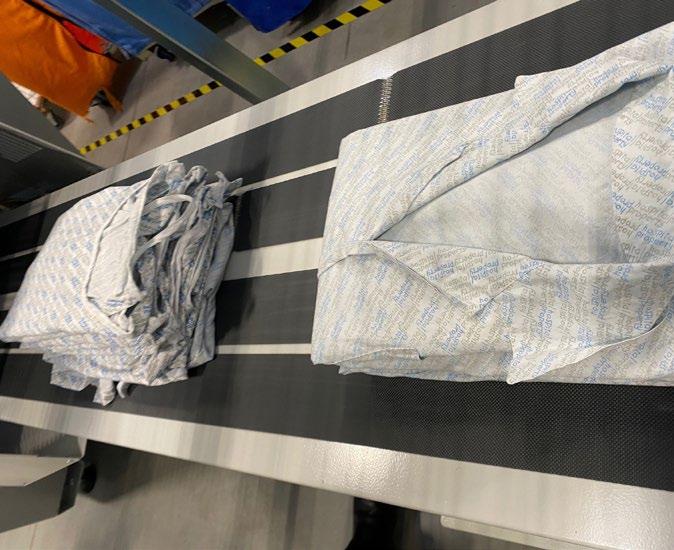
5 minute read
› Best for the environment and best for its people
30 August 2021
“I’d drink that,” says Canterbury Linen Services (CLS) General Manager Rod Fisher, scooping some of the rinse water into his hand that has come out of a load of laundry in one of the facility’s huge German-made washing machines. “Essentially this water is as clean as the water that went into the machine. Our chemical supplier carries out testing twice a month and the results show little difference in the composition between the two.” That’s because the highly efficient washing machine dumps all the soiled water at the end of the wash cycle, before rinsing, using a large-diameter ‘quick drain’. “This means linen is transferred to the rinse zone with little soil (or chemicals) and also enables us to use less water, the lowest water usage per kilogram of any New Zealand laundry,” he says. CLS is a fully owned subsidiary of Canterbury DHB. It delivers linen to Canterbury, West Coast and South Canterbury DHB hospitals ensuring a constant supply of clean, folded and ironed, sheets, towels, hospital gowns, pillow cases, scrubs and more, arrive on wards daily. They also provide a laundry service to some commercial customers.
Advertisement
CLS’s new facility opened in November last year, shifting from its old earthquake-damaged building in Hillmorton, to Dakota Park - Christchurch Airport’s 80-hectare freight and logistics precinct. The CLS plant is the largest commercial laundry in the South Island and one of the most modern laundry facilities in Australasia. “What we have here is the most efficient washing technology available in New Zealand, it really is a state-ofthe-art environmentally-friendly process,” Rod says. CLS, which also makes up sterile Theatre packs in an airfiltered room, even has a heat exchanger to take heat from its waste water and to heat the incoming cold water. “This reduces the energy requirements of heating washing water. The waste water is cooled by the heat exchanger and stored in a large tank, then sent to the Christchurch City Council’s trade waste system at a slow and even rate or at night to reduce peaks in the council’s system.” All the chemicals that CLS uses are fully biodegradable, and the plant is close to carbon neutral, powered by renewable wood chips, in a wood chip boiler made by Lyttelton Engineering. “This plant is the realisation of four years of design and planning and uses the latest technology from Germany. We’re thrilled about it, because of how much better it is for the environment, and also for our staff, who are the heart of this organisation,” says Rod, who has worked at CLS for 25 years. The busy team of 100 come from countries as diverse as Sudan, Thailand, the Pacific Islands and Colombia, and include many long-serving staff, such as Pauline Hinton (54 years’ service) and Senior Production Supervisor Tai Young who has worked for CLS for 43 years. Staff stay long-term at CLS because it is a great place to work, says Rod. “It’s like a big family and everyone is treated with care and respect.” A key focus of designing the facility was around ergonomics and health and safety with most of the most onerous tasks taken over by machine and the facility fully air conditioned for staff comfort and welfare.
Please note these photos were taken before Level 4 lockdown
Canterbury Linen Services (CLS) General Manager Rod Fisher scooping up some water that has been pressed out of the linen after rinsing
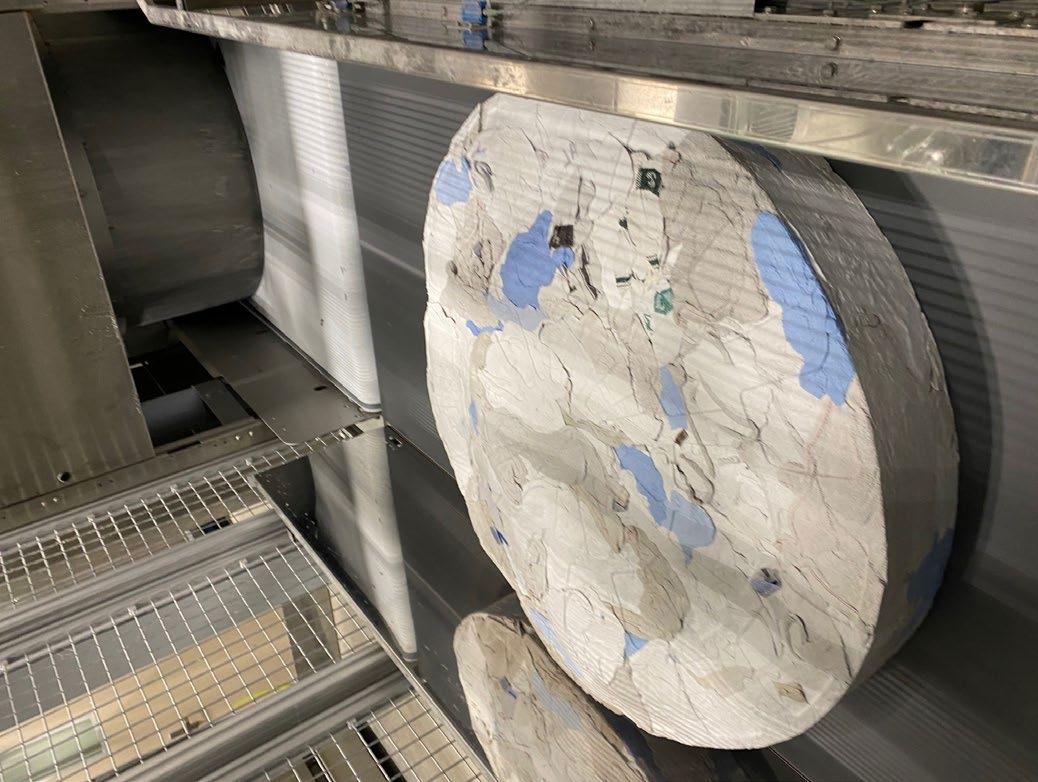
Water is squeezed rather than spun out of the clothes leaving them much drier Senior Production Supervisor Tai Young removing damaged domes from hospital gowns
Fact box:
*20-25,000 kilograms (kg) of laundry done each day *250,000 individual items laundered a week
*Lowest water usage per kg of any New Zealand laundry (around four litres per kg of laundry, compared to up to 15-20 at many other commercial laundries) *About 17,000 reusable mop pads washed and sterilised each week
*About 22,000 scrubs and patient gowns laundered each week
The life of a dirty sheet:
Taken off a bed in the hospital and placed in a laundry bag. Put into a laundry chute or collected by an orderly and taken to a central point for pick up by CLS. Delivered to CLS by its own fleet of trucks (eight, plus two vans) which are regularly disinfected. Unloaded from bags onto a conveyor. CLS staff sort the soiled items wearing PPE comprising impervious gowns, nitrile gloves and a mask. Weighed into an 85kg load and stored in an overhead rail system ready for washing. Washed in a continuous batch washer that processes up to 2,125kg of items per hour. The average cycle time is 24 minutes. The water is squeezed rather than spun out of the linen. This is done with a press that puts 450 tonnes of force on the batch of linen and removes far more water than spinning, saving time and energy in drying. Drying takes about 20 minutes for an 85 kg load, controlled by infrared sensors that measure the temperature of the linen. After drying, the sheet goes back into a bag and is transported on overhead rails to a finishing machine which irons and folds it.
The sheet (250 thread count, 80 percent cotton, 20 percent polyester) comes from the drying area in a damp state. Staff clip it onto storage hangers and then it passes through an ironing line with heated rollers at 175deg C. This fully dries and irons the sheet which is then automatically folded and stacked. During this process a high-resolution camera assesses the sheet quality, looking for holes, stains and rips. The sheet then travels by conveyor onto a disinfected trolley to the packing/dispatch area. From there it goes onto a trolley or into bags for delivery back to Canterbury DHB or hotel customers.
30 August 2021
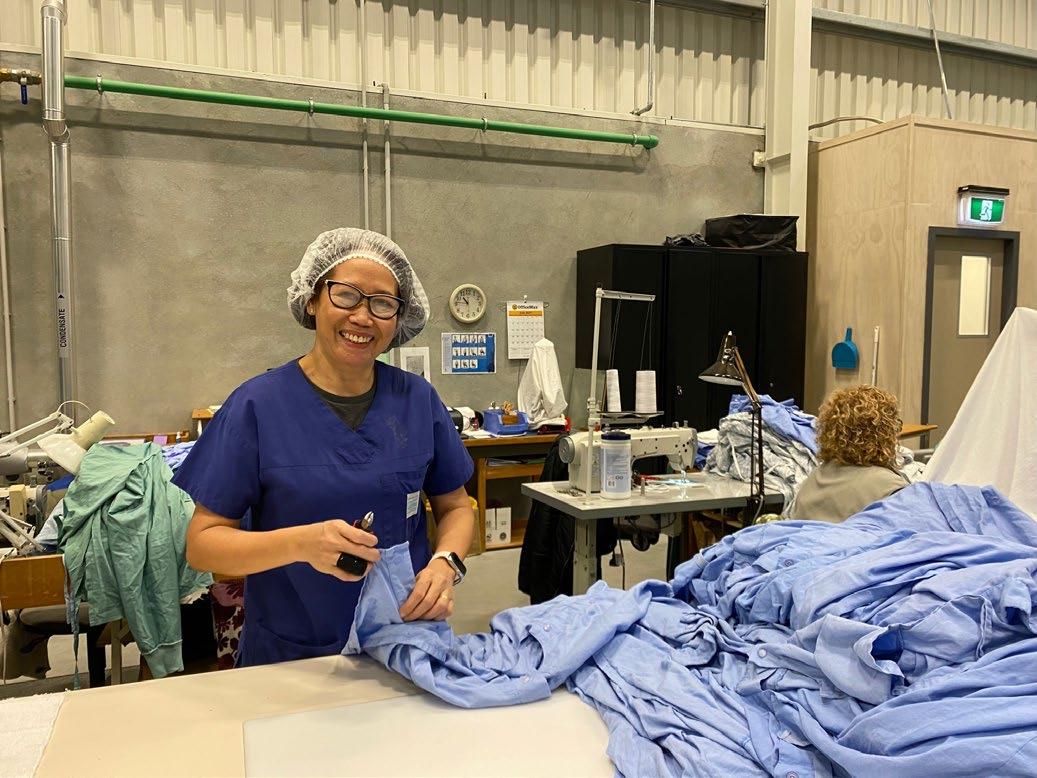
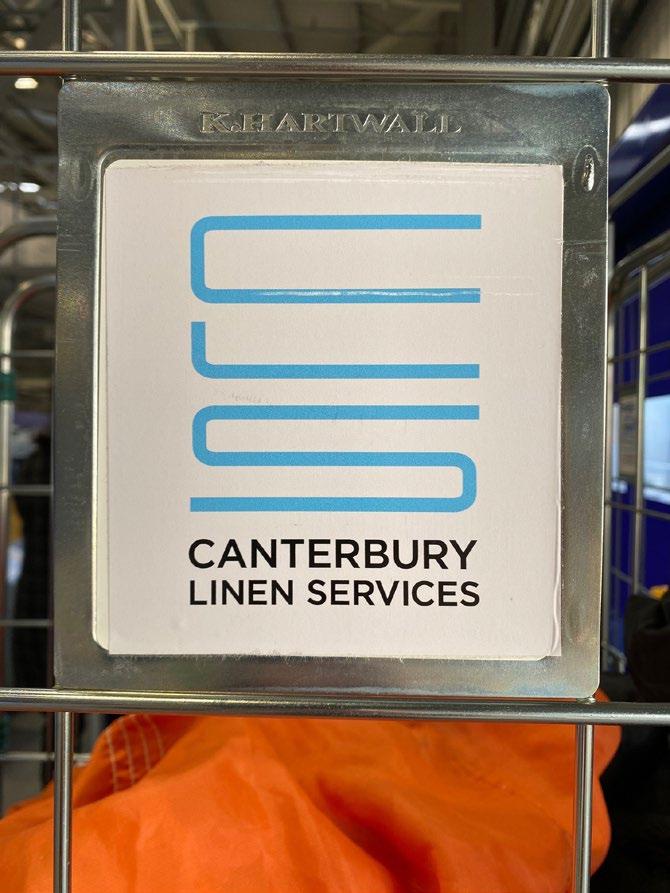
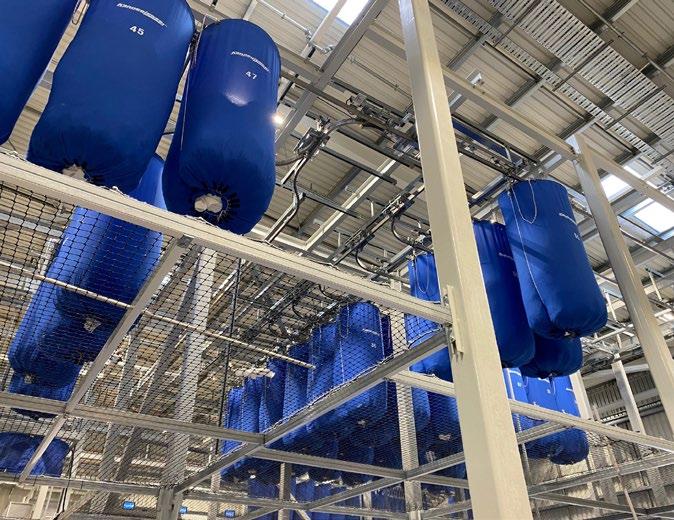
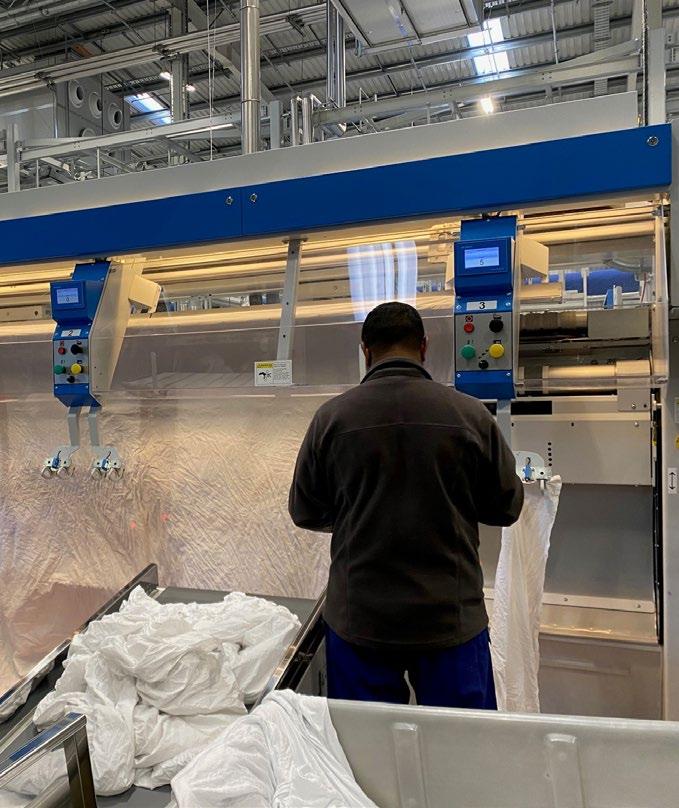


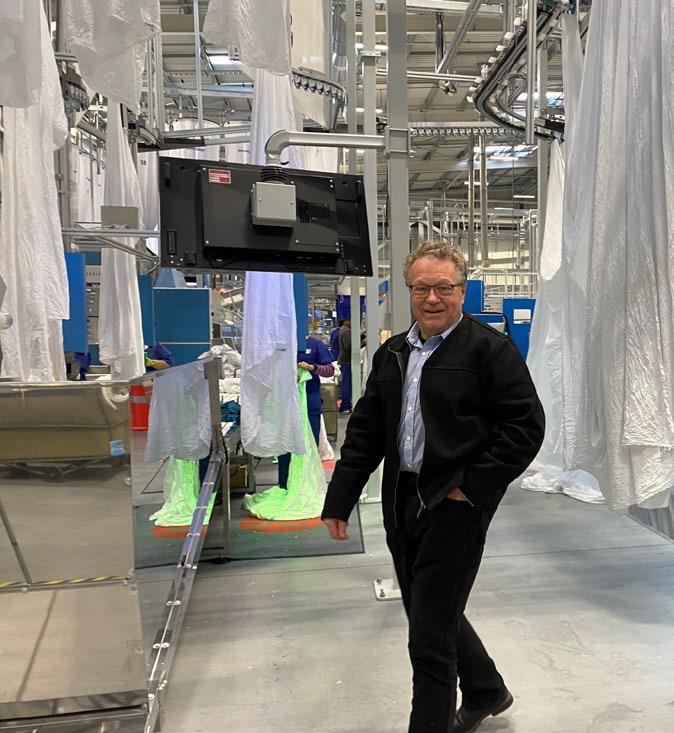

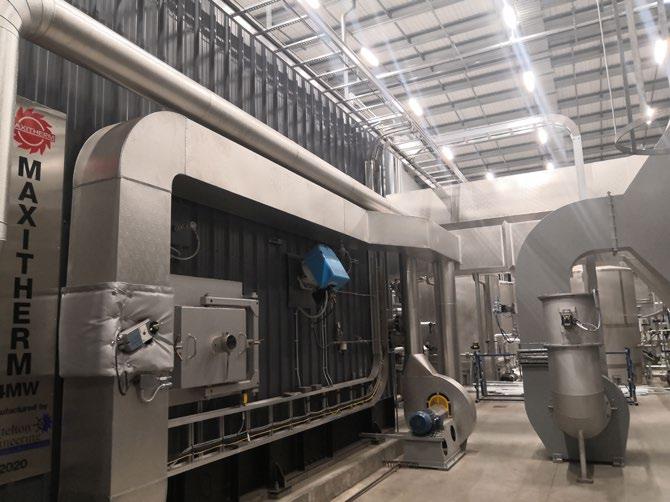
30 August 2021
